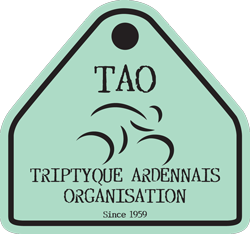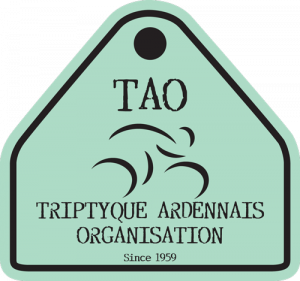Intrigue and skill blend seamlessly, revealing thrilling moments through the excitement of the daman
- Intrigue and skill blend seamlessly, revealing thrilling moments through the excitement of the daman game experience.
- A Brief History of the Daman Game
- Development Over Time
- Understanding the Rules of the Daman Game
- Key Elements of Gameplay
- The Strategy Behind Winning at Daman
- Psychological Aspects of Daman Gameplay
- The Community and Culture Surrounding the Daman Game
- Future Prospects of the Daman Game
Intrigue and skill blend seamlessly, revealing thrilling moments through the excitement of the daman game experience.
The world of gambling is a maze filled with excitement, unpredictability, and skill. Among the various forms of gambling, the daman game stands out due to its unique blend of strategy and chance. This game, deeply rooted in tradition, captivates players with its rich history and engaging gameplay. As we delve into the intricacies of the daman game, we explore its rules, strategies, and the psychology behind players’ choices.
Understanding the daman gamerequires daman game a keen focus on its mechanics and the decisions that players must make throughout the game. The setup often involves multiple players striving for victory, engaging in a battle of wits that can create lasting bonds or fierce rivalries. The excitement of each round builds anticipation as players wait for the outcome of their meticulously calculated decisions.
Additionally, the social aspect of this game adds another layer of enjoyment. Friends and family gather around, creating an atmosphere charged with energy and entertainment. Through skillful play and strong instincts, players make choices that can turn the tide in their favor, leading to electrifying moments that define the daman experience.
Moreover, understanding the nuances and strategies involved in the daman game enhances the overall engagement. Players not only enjoy the thrill of competition but also appreciate the tactical elements that lead to success. With each game played, individuals can learn more about themselves and refine their abilities, ultimately making it a captivating and enriching experience.
In this article, we will explore the evolution of the daman game, its rules, strategic tips, and the psychological dynamics involved in gameplay. Through various sections, we will unveil the thrill and excitement that the daman game in its essence provides, connecting players not only to the game itself but also to each other.
A Brief History of the Daman Game
The daman game has a rich history that dates back centuries, with roots in various cultures that have adapted it over time. Originating from the heart of gambling traditions, the game has evolved into a popular social activity enjoyed worldwide. Its embrace of both luck and skill has solidified its status in gaming spaces.
The historical significance of the daman game lies in its connection with ancient practices of divination and gambling, where players sought not only fortune but also social interaction. Over the years, it has transcended geographical boundaries, becoming a cherished pastime in many societies, embodying not just a game but a lifestyle.
Through various transformations, the daman game has retained core principles while accommodating modern gameplay elements. This adaptability is a testament to its engaging nature, ensuring players remain captivated regardless of changing times.
| Ancient Civilizations | Dice-based play, spiritual beliefs | Connection with fate and luck |
| Middle Ages | Strategic elements, social gatherings | Foundation for modern gameplay |
| Modern Era | Digital adaptations, global reach | Preserved tradition, contemporary relevance |
Development Over Time
The journey of the daman game reflects its ability to adapt and flourish through various historical periods. During ancient times, it was played with rudimentary tools, relying on dice and physical tokens. As cultures evolved, so did the game’s format, transforming into a strategic challenge that emphasized players’ decision-making skills.
In modern times, the advent of technology has enabled the daman game to reach a global audience. Online platforms emerged, allowing players from different continents to engage, thus fostering a diverse community. This digital transformation has redefined traditional gameplay, creating hybrid versions that retain the spirit while accommodating modern preferences.
Today, the daman game enjoys immense popularity across various demographics, enhancing its features while making it accessible. As it continues to evolve, it carries the historical essence, connecting players through shared experiences while retaining its competitive edge.
Understanding the Rules of the Daman Game
To fully immerse yourself in the daman game, a solid understanding of its rules is imperative. The game begins with players forming an agreement on foundational rules, such as the number of players, the use of dice, and the betting system. These fundamental aspects set the stage for a challenging yet exciting competition.
Typically played with a standard set of values, the daman game follows a turn-based structure. Each player aims to achieve specific outcomes, guided by established rules that dictate the game’s flow. Mastering these rules is essential, as they dictate strategies and determine the potential for winning.
- Player Turn Order: Players take turns rolling dice or making strategic moves based on game rules.
- Scoring System: Points are accumulated through successful plays, rewarding strategic thinking and execution.
- Betting Dynamics: Players may place bets at various intervals, increasing the game’s excitement and stakes.
- Winning Conditions: A clear understanding of how to win is crucial, whether through points or achieving specific goals.
Key Elements of Gameplay
Central to the daman game is its mix of elements that contribute to its thrilling dynamics. A crucial aspect involves understanding the risks associated with each decision players make throughout the game. Each move comes with potential rewards and consequences, reinforcing strategic thinking.
The interaction among players is also significant, fostering a competitive yet entertaining environment. Players often form alliances or rivalries, adding layers of complexity and creating memorable moments. The social element enhances enjoyment, as shared experiences can lead to personal connections and unique stories.
Additionally, timing plays a pivotal role in gameplay. Making calculated decisions at the right moment can lead to success, emphasizing the importance of observation and adaptability. Players must remain vigilant and ready to seize opportunities as they arise, shaping the outcome of each game round.
The Strategy Behind Winning at Daman
One of the most intriguing aspects of the daman game is the strategic depth it offers, making it a battlefield of wits more than mere luck. Players need to analyze their opponents’ actions and adjust their strategies dynamically. The blend of intuition and analytical thinking often determines success.
Strategic planning can involve various tactics such as anticipating opponents’ moves, manipulating betting dynamics, and controlling the game’s pacing. Every round presents players with unique challenges, requiring them to devise clever strategies tailored to their opponents and the current game state.
- Observation: Paying attention to opponents’ behaviors can yield valuable insights.
- Adaptability: Being flexible in strategy based on game developments increases chances of success.
- Risk Management: Knowing when to take risks or play conservatively is essential.
- Practice: Regular gameplay experience enhances skill and understanding of nuanced strategies.
Psychological Aspects of Daman Gameplay
The daman game draws players beyond the mere mechanics, tapping into psychological elements that affect decision-making. The interactions during the game can evoke a rollercoaster of emotions, from excitement to frustration, influencing each player’s performance.
Understanding opponents’ motivations and psychological states can give players the upper hand. Reading body language, facial expressions, and betting patterns can reveal crucial information. Recognizing when others are bluffing or hiding weaknesses enhances one’s chances of making effective counterplays.
Moreover, the excitement of the game can lead to adrenaline-fueled decisions that may not always be strategically sound. Players must balance the thrill of the moment with rational decision-making, ensuring they maintain control over their actions in high-stakes situations.
The Community and Culture Surrounding the Daman Game
The culture of the daman game extends far beyond its gameplay. It encompasses a vibrant community of players who continuously engage, share strategies, and pass down traditions. Meeting up for games fosters camaraderie and strengthens social bonds, making it more than just a competitive venture.
This community aspect often includes local tournaments, meetups, and digital platforms where players can connect. Celebrating each other’s victories and learning from losses creates a dynamic environment where individuals can develop and refine their skills.
The cultural significance of the daman game can also be seen in how it influences social gatherings and events, becoming a staple of entertainment in various settings. Its role in bringing people together highlights its importance beyond mere gambling, as it contributes to shared experiences and memories.
Future Prospects of the Daman Game
As the world evolves, so does the daman game, adapting to new technologies and emerging trends. The future holds promising possibilities, particularly as digital platforms grow in popularity. Online versions of the game provide accessibility to diverse audiences, ensuring that the tradition continues to flourish.
Additionally, as gaming culture becomes more intertwined with modern entertainment, the daman game can benefit from innovative adaptations that enhance engagement and maintain traditional elements. This evolution can create new experiences that attract younger generations, ensuring its relevance for years to come.
With creativity and technology, the spirit of the daman game can be preserved while offering fresh perspectives, ultimately bridging the gap between tradition and innovation.
In summary, the daman game provides an exhilarating experience that blends strategic depth, social interaction, and rich history. Its ability to adapt and maintain its essence across generations highlights its significance in the gambling world. Whether played among friends or beyond, the thrill of daman is undeniable.





